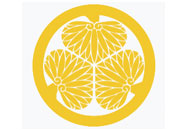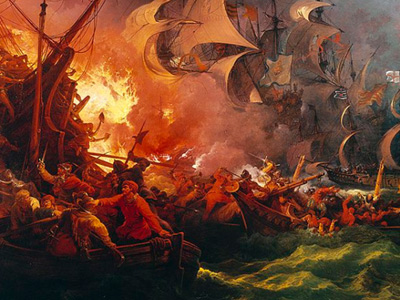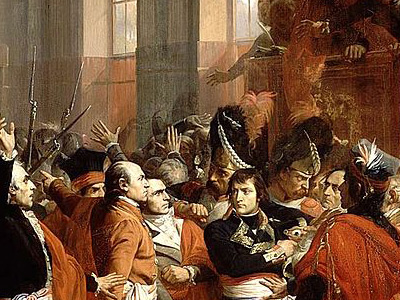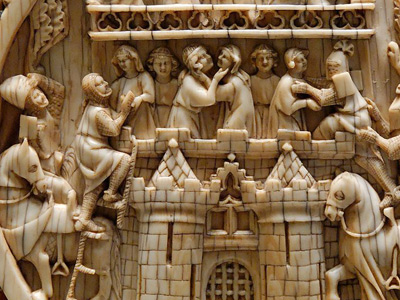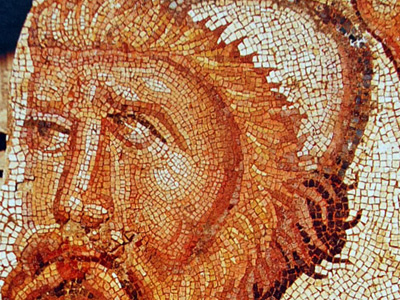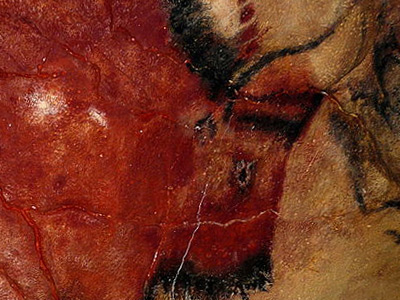Tokugawa Ieyasu (1543-1616)
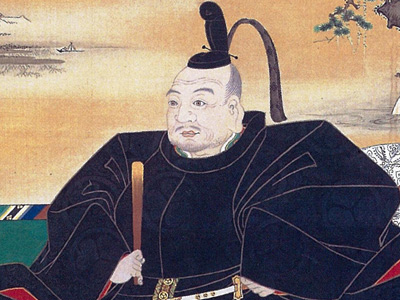
Shogun (1603–1605)
On March 24, 1603, Tokugawa Ieyasu received the title of shogun from Emperor Go-Yōzei. Ieyasu was 60 years old. He had outlasted all the other great men of his times: Nobunaga, Hideyoshi, Shingen, Kenshin. As shogun, he used his remaining years to create and solidify the Tokugawa shogunate, which ushered in the Edo period, and was the third shogunal government (after the Kamakura (Minamoto) and the Ashikaga). To consolidate his rule, Ieyasu gathered his men for one last battle to eliminate the remnants of the Toyotomi clan in Osaka Castle. He succeeded at the Siege of Osaka and removed all of the possible threats to his power. He claimed descent from the Minamoto clan, by way of the Nitta clan. His descendants would marry into the Taira clan and the Fujiwara clan. The Tokugawa Shogunate would rule Japan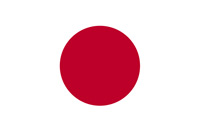 Japan is an island country in East Asia. Beginning in the 12th century, political power was held by a series of military dictators (shōgun) and feudal lords (daimyō) and enforced by a class of warrior nobility (samurai). In the Meiji period, the empire adopted a Western-modeled constitution and pursued a program of industrialization and modernization. A global leader in the automotive, robotics and electronics industries, Japan has made significant contributions to science and technology. for the next 250 years.
Japan is an island country in East Asia. Beginning in the 12th century, political power was held by a series of military dictators (shōgun) and feudal lords (daimyō) and enforced by a class of warrior nobility (samurai). In the Meiji period, the empire adopted a Western-modeled constitution and pursued a program of industrialization and modernization. A global leader in the automotive, robotics and electronics industries, Japan has made significant contributions to science and technology. for the next 250 years.
Following a well established Japanese pattern, Ieyasu abdicated his official position as shogun in 1605. His successor was his son and heir, Tokugawa Hidetada. There may have been several factors that contributed to his decision, including his desire to avoid being tied up in ceremonial duties, to make it harder for his enemies to attack the real power center, and to secure a smoother succession of his son. The abdication of Ieyasu had no effect on the practical extent of his powers or his rule; but Hidetada nevertheless assumed a role as formal head of the shogunal bureaucracy.
HISTORY
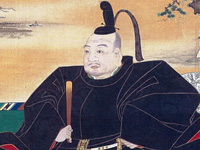
RESOURCES
This article uses material from the Wikipedia article "Tokugawa Ieyasu (1543-1616)", which is released under the Creative Commons Attribution-Share-Alike License 3.0.
© Stories Preschool. All Rights Reserved.

